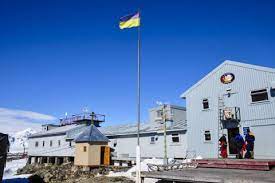
The number of passengers who used buses to travel abroad in 2023 decreased to 7.5 million passengers, compared to 8.5 million in 2022.
Such data Deputy Minister of Development of Communities, Territories and Infrastructure Sergiy Derkach made public, opening the forum of the reform of international bus transportation.
According to him, in 2020 only 1.1 million passengers traveled abroad by buses.
“This is a large passenger traffic today for Ukraine. For example, Ukrzaliznytsia carried 2 million passengers last year,” Derkach said.
He emphasized that bus service today, given the lack of air service, has become one of the main for trips from Ukraine abroad.
The average duration of travel by bus in international traffic is 31 hours of which about 7 hours passengers spend waiting at the border.
“This is exactly what the state should change and what you and I should change. That is why today we will present our reform: electronic tools that will primarily help the passenger and carriers,” Derkach said.
According to him, the register of international transportation will soon be available for passengers, in which each passenger will be able to find his route, check the carrier and going to his site to buy a ticket. A carrier’s office is being created for carriers, where they will be able to quickly open new routes without paperwork and bureaucratic procedures.
Deputy Minister expressed hope that the reform of intercity bus transportation will help to increase budget revenues. According to his data, about 25% of carriers operate in the market without paying taxes, and the budget receives up to UAH 500 million annually.

European Council President Charles Michel assures that concrete steps to use the proceeds from frozen Russian assets will be taken very quickly so that the first 1 billion euros will be allocated to Ukraine, including for military aid, as early as July 1 this year.
“We have taken a very important decision by making it possible to postpone unexpected revenues – and this is a proposal from the European Commission – and we are determined to act very quickly so that we can take some of this money to support Ukraine, including the possibility of (supporting) military equipment. This demonstrates that the 27 leaders who were around the table understand the gravity of the situation,” he said Thursday in Brussels at a news conference after the European Council meeting.
Michel is convinced that the necessary steps to make the mechanism work will be taken “very quickly”. “These proposals were presented by the Commission yesterday. There is considerable support in the European Council for this approach,” the European Council president said.
According to Michel, the Belgian presidency confirmed that it too “intends to work with all colleagues very quickly”. “This is really very important because there will be more opportunity to support Ukraine with military equipment, with what is urgently needed,” he emphasized.
European Commission President Ursula von der Leyen, in turn, said she was pleased that the leaders had approved the use of emergency revenues from immobilized Russian assets. “This will provide funding to supply Ukraine with military equipment. We can expect to be able to raise €3 billion in 2024 and a similar amount in future years… There is strong support to use the windfall revenues from immobilized assets for military support to Ukraine. I told the leaders that if we act quickly to finalize our proposals, we can disburse 1 billion as early as July 1. The assets are in our hands and if we are quick, there will be concrete actions in the summer,” she explained.
CHARLES MICHEL, EUROPEAN COUNCIL, MILITARY AID, RUSSIAN ASSETS, UKRAINE

The 29th Ukrainian Antarctic expedition has arrived at the Akademik Vernadsky station, the changeover of annual teams has started, the Ministry of Education and Science of Ukraine reports.
“On the “Akademik Vernadsky” began the reshift of annual expeditions. On the night of March 20-21 (Ukrainian time) our ship “Noosphere” delivered to the station the 29th Ukrainian Antarctic expedition, which should replace colleagues from 28 UAE”, – stated in the message of the press service of the Ministry.
It is noted that in the coming days will continue to unload the icebreaker, in particular polar explorers should transfer to the shore 50 tons of cargo and 140 tons of fuel needed for the next year of wintering.
Also, scientists and specialists of the 28th UAE will hand over cases to the team of the 29th expedition.

France has increased defense spending, some of which will be invested in production in Ukraine, Ambassador Extraordinary and Plenipotentiary of the French Republic to Ukraine Gael Vesierre has said.
During the 16th annual Kyiv Security Forum founded by Arseniy Yatsenyuk’s Open Ukraine Foundation, the Ambassador noted that France’s defense spending exceeded 2% of GDP.
Regarding investments in defense, the diplomat stressed that investments are also needed to produce in Ukraine what the Ukrainian Armed Forces need.
“We say: if we can start such production in Ukraine, we should do it,” Vesier said.
He also called for supporting Ukraine to achieve victory.
“Let’s imagine for a second if Russia wins. It means that Russia can destroy a neighbor and the international community can do nothing in response. It means that many countries will say: we now need to join the nuclear club because our security is at risk. It will be a more risky and unstable situation than today,” the French diplomat emphasized.
The 16th annual Kiev Security Forum, organized to mobilize transatlantic support for Ukraine, is taking place March 21-22.
Number of refugees from Ukraine in selected countries as of 31.12.2023

Source: Open4Business.com.ua and experts.news
Quotes of interbank currency market of Ukraine (UAH for 1 PLN, in 01.12.2023-31.12.2023)

Source: Open4Business.com.ua and experts.news